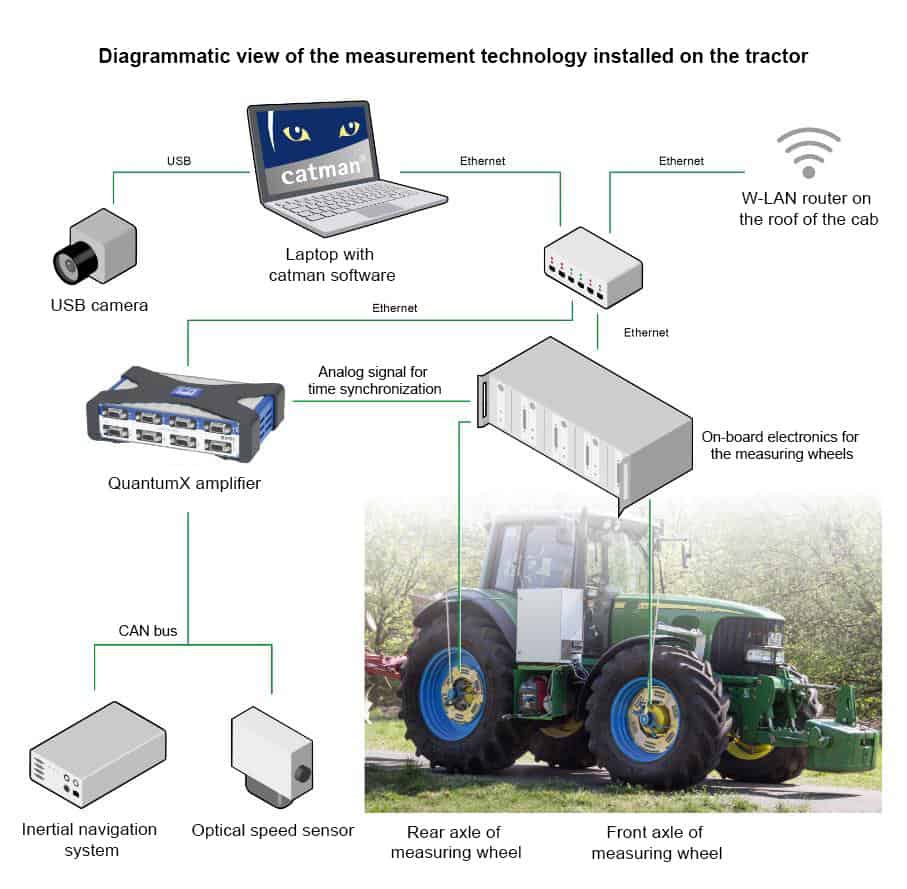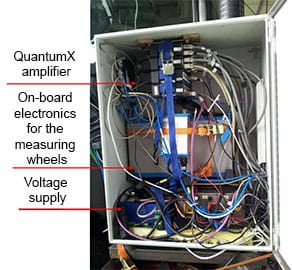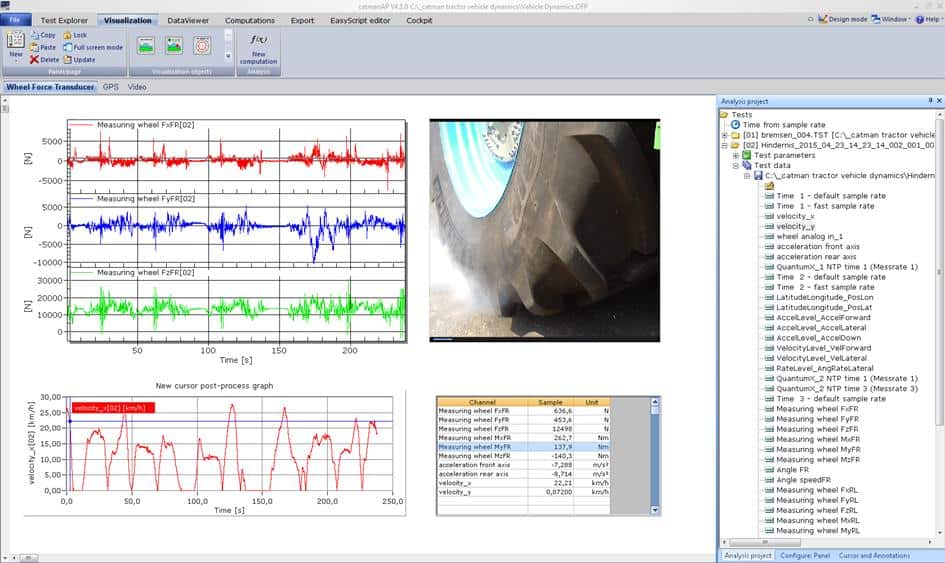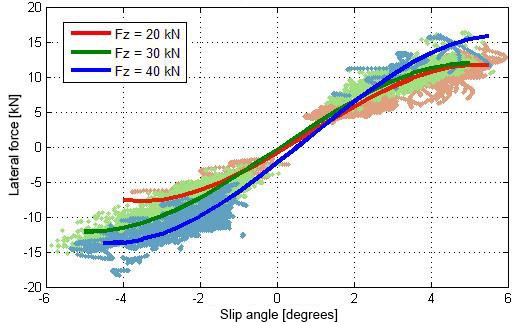Measurement technology and software
A comprehensive examination of driving dynamics requires a wide range of different sensor equipment and the corresponding software to record and analyze the measurement data. A diagram of the measurement technology used for this examination is shown in Fig. 2. The HBM catman measurement software, the HBM QuantumX measuring amplifier system and the following sensors were used in the tests:
- Analog sensors for measuring force, displacement, and strain
- Two Kistler wheel force sensors for wheel loads up to 24 metric tons
- CAN inertial navigation system
- CAN speed sensors
- Video camera
In addition to supporting the QuantumX amplifier system, the catman data acquisition system also makes it possible to acquire measurement data from the Kistler wheel force sensors via an Ethernet interface and video data via a USB or Ethernet interface.
Since there is no room in the tractor cab to hold the necessary measuring equipment, it was placed in a control cabinet on the right side of the vehicle (Fig. 3). The QuantumX amplifier, the on-board electronics required for the measuring wheels and the voltage supply are also installed in the control cabinet. All of the measurement equipment is operated from a measurement PC installed in the driver's cab. A second person outside the tractor can access this PC during the road tests via a remote desktop connection.
To monitor the road tests as they were being conducted, an option of the catman software was used for visualizing measurement data during the test. An example of this is shown in Fig. 4 for the essential parameters of a measuring wheel, together with a video recording. The tests can be analyzed accurately from a safe distance using this function.



